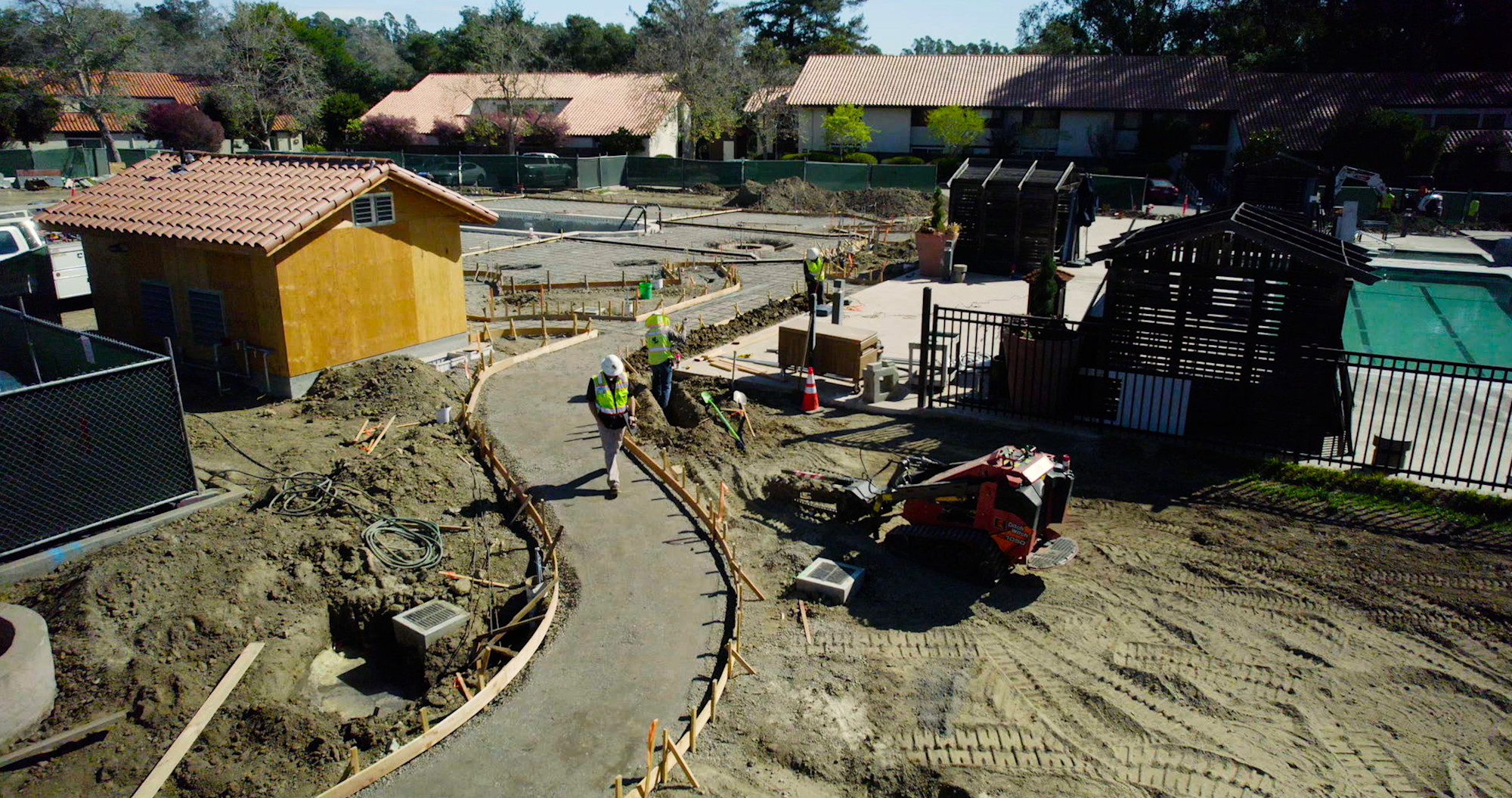Table of Contents
Table of Contents
- The Reality of the Labor Shortage
- Hidden costs of turnover
- Why Wages Alone Won't Solve It
- Creating a Crew Culture That Retains
- Operational respect matters daily.
- Training and Career Development
- Invest in certifications and credentials.
- Create visible career pathways.
- Tie compensation to skill development.
- Calculate training ROI
- Efficiency as a Retention Tool
- The first 30 minutes matter most.
- Equipment reliability shows respect.
- Smart routing saves time and improves work-life balance.
- Competitive Compensation Strategy
- Make pay progression transparent.
- Build a Workplace Worth Staying For
It’s Monday morning, and your phone rings before 6 a.m.
Your most reliable crew leader just quit—effective immediately.
Now you’re scrambling to cover a full day of scheduled jobs, worried about service quality with inexperienced workers filling in, and wondering how you’ll find qualified replacements in an already-tight labor market that seems to get more competitive every month.
This plays out across the landscaping industry. It’s not just your company, your region, or your management style. It’s an industry-wide crisis that’s worsening, not improving.
According to the 2026 Commercial Landscape Industry Report, 54% of contractors identify recruiting and retaining staff as a top business risk—right alongside economic uncertainty and rising material costs. This makes retention an HR concern, a fundamental threat to business survival.
The answer?
70% of contractors plan to raise wages in 2026, with 44% planning increases of 4% or more. But here’s the uncomfortable truth: throwing money at the problem isn’t enough anymore.
The landscaping businesses that will succeed in 2026 won’t just offer competitive pay—they’ll create career pathways, invest in meaningful training, run efficient operations that crews want to be part of, and foster cultures where workers feel respected and valued.
Retention will depend on both financial incentives and building workplaces people don’t want to leave.
The Reality of the Labor Shortage
54% of contractors cite employee retention as a top business risk for 2026—ranking it alongside cost increases and supply chain issues, according to industry data. This makes retention an HR concern, a fundamental business threat that directly impacts your ability to serve clients and grow profitably.
The competition for workers goes far beyond other landscaping companies.
In many markets, you’re competing with construction firms offering:
✓ Year-round work
✓ Utilities providing benefits packages
✓ Warehouses paying sign-on bonuses
✓ Delivery services advertising flexible schedules
They’re all fishing from the same limited talent pool, and many offer advantages small landscaping businesses can’t match.
For companies facing these hiring challenges, subcontracting landscaping work can offer a way to expand capacity and adapt to fluctuating labor availability.
Hidden costs of turnover
The real cost of losing workers goes far beyond recruiting costs:
Reduced productivity during training periods when new hires work more slowly and require supervision
Lower quality work that generates client complaints and costly callbacks
Damage to client relationships when familiar, trusted faces disappear without explanation
Scheduling disruptions that force last-minute reassignments and operational chaos. Burden on remaining crew members who must pick up the slack, increasing their burnout risk
Lost institutional knowledge about client preferences, property quirks, and efficient techniques
When your most skilled workers leave, they take institutional knowledge with them—which properties need special attention, which clients have specific preferences, and how to handle challenging terrain efficiently.
This can’t be replaced overnight, and rebuilding it takes months of on-the-job experience that affects quality and profitability throughout the learning curve.
Why Wages Alone Won't Solve It
Pay raises help attract talent, but they create a profitability squeeze when offset by rising costs elsewhere. The 2026 Industry Report reveals that 48% of contractors cite material costs as a top business risk, and 37% anticipate equipment and material costs will rise 10% or more.
When you’re raising wages while absorbing higher fuel, materials, equipment, and insurance costs, margins disappear quickly.
The wage race creates a competitive treadmill that benefits no one in the long term.
When you raise wages to $22 per hour, competitors match or exceed your offer at $23 per hour. You’re back where you started in terms of competitive positioning, but now with a permanently higher cost structure that must be passed to clients or absorbed through reduced profitability.
Employees leave for reasons beyond compensation:
Limited growth opportunities with no clear path from crew member to leadership roles
Poor work-life balance from disorganized scheduling and excessive overtime demands
Toxic company culture where workers feel disrespected or undervalued
Difficult relationships with supervisors who micromanage, communicate poorly, or show favoritism
Lack of recognition for quality work and consistent performance
Inefficient operations that waste time and create daily frustrations
Inadequate equipment or tools that make jobs harder than necessary
No training that would help them improve skills and advance their careers
Jon Gohl, Director of Customer Experience at Aspire, says in the report: “When you have materials going through the roof and labor shortages, you’ve got to tighten up. Are we efficient? How quickly are we getting off the lot? That alone saves money.”
Companies that focus solely on wages while ignoring operational efficiency, career development, and company culture will continue to lose workers to competitors who offer the complete package—not just the highest hourly rate.
Creating a Crew Culture That Retains
Company culture isn’t about ping-pong tables or pizza parties.
It’s how supervisors communicate daily, whether workers feel respected when they raise concerns, if their input matters when solving problems, and whether leadership follows through on commitments.
These tangible interactions shape whether employees stay or start browsing job listings.
Supervisors determine retention outcomes.
Crew leaders and supervisors have more impact on retention than almost any other factor. The saying holds true: employees don’t leave companies—they leave managers.
A great supervisor can retain a crew despite industry-average wages by:
Communicating clearly about daily expectations and job requirements
Listening to crew feedback and acting on reasonable suggestions
Recognizing quality work publicly and addressing issues privately
Supporting crew members when clients make unreasonable demands
Advocating for their teams with upper management
Maintaining consistent standards without playing favorites
A poor supervisor will lose workers–despite above-market pay–through micromanagement, inconsistent expectations, poor communication, taking credit for crew successes, or blaming workers for management failures.
Many landscaping companies promote skilled workers to supervisory roles without providing them with leadership training.
Technical competence doesn’t automatically translate to management ability. Invest in training supervisors to communicate effectively, provide constructive feedback, resolve conflicts, and motivate individuals with diverse personalities.
Operational respect matters daily.
Culture manifests through operational decisions that show whether you respect crew members’ time and ability to do quality work:
Provide properly maintained equipment that works reliably
Ensure adequate break time and clean facilities at job sites
Avoid delays caused by poor planning or missing materials
Stock trucks the night before, so crews start working immediately
Schedule realistic job timelines that don’t require rushing
Respond promptly when crews encounter problems in the field
Aspire's mobile app and scheduling features help eliminate common frustrations by giving crews clear job information, efficient routes, and direct communication channels with management—operational improvements that demonstrate respect for their time and professionalism.
Workers notice when operations run smoothly versus chaotically.
Smooth operations signal competent leadership worth staying with; chronic chaos signals it’s time to find better-run companies.
Training and Career Development
Structured onboarding programs dramatically impact retention.
New hires who receive comprehensive onboarding—not just a quick equipment overview and “follow Joe today”—feel more confident, productive, and connected to the company from day one. They understand expectations, know who to ask for help, and how their role contributes to overall success.
Companies that teach proper techniques, equipment operation, plant knowledge, and trade skills create value for workers that goes beyond a single job.
You’re not just hiring them – you’re developing their professional capabilities in ways that increase their long-term earning potential and career prospects.
Invest in certifications and credentials.
Pay for or subsidize certifications that increase worker value:
Pesticide applicator licenses
Irrigation system certification
Heavy equipment operation credentials
Safety training certifications
Specialized trade skills courses
Workers know when companies invest in their professional development. It means you’re committed to their growth, not just extracting immediate labor value.
Create visible career pathways.
Map out clear advancement routes from entry-level positions to crew leader, foreman, supervisor, and potentially management roles.
Workers should know the skills, experience, and performance standards required for each level.
Don’t keep career progression a mystery. Document the pathway explicitly:
What does a crew leader do differently from a crew member?
What qualifications lead to foreman consideration?
How long does advancement typically take with strong performance?
What training or certifications accelerate progression?
Tie compensation to skill development.
Consider implementing pay increases tied to specific skill acquisition rather than just tenure.
A worker who earns irrigation certification, completes safety training, and masters multiple equipment types should earn more than someone who’s just been around longer without expanding capabilities.
Calculate training ROI
Training takes time and investment, but calculate the returns:
Reduced turnover that eliminates constant recruiting and onboarding costs
Higher productivity from workers who understand efficient techniques
Better quality work that impresses clients and generates referrals
Fewer mistakes and callbacks that waste time and damage reputation
Ability to take on more complex, higher-margin projects with skilled crews
Aspire's business management platform helps track employee certifications, training completion, and skill levels – so you know which crew members are qualified for specific jobs and can plan development pathways systematically.
Efficiency as a Retention Tool
Daily frustrations with disorganized operations erode job satisfaction faster than almost anything else.
When workers spend time searching for equipment, waiting for delayed materials, driving inefficient routes, or dealing with unclear job instructions, they become demoralized and start looking for better-run companies that respect their time.
The first 30 minutes matter most.
The first 30 minutes of the day have a disproportionate impact on morale.
Crews start the day energized and motivated when they arrive to find:
✓ Equipment ready
✓ Trucks loaded
✓ Routes planned
✓ Clear instructions
Crews that arrive at chaos, missing tools, and confusion start demoralized—and that mood persists all day.
Equipment reliability shows respect.
Nothing frustrates crews more than equipment that doesn’t work or isn’t available when needed.
Broken mowers, unreliable trucks, and missing tools send a clear message: management doesn’t respect workers’ time or ability to do quality work.
Proactive maintenance schedules and adequate equipment inventory signal the opposite – you value crew productivity and understand they can’t deliver quality service with inadequate tools.
Smart routing saves time and improves work-life balance.
Intelligent routing and scheduling minimize unproductive drive time between jobs.
Every hour saved in the truck is an hour that crews can spend doing the work they were hired to do – or getting home earlier, which dramatically improves their work-life balance.
Complete job information enables efficiency.
When crews arrive at a property with complete information – what needs to be done, any special client requests, known challenges, time allocated – they can work efficiently without constant phone calls to the office seeking clarification.
Technology eliminates administrative hassles.
Aspire's field service management software removes many traditional pain points through modern routing, scheduling, equipment tracking, and job documentation. Mobile access to job details, the ability to document completed work with photos, and digital time tracking eliminate administrative hassles that crews dealt with on paper.
Communication flow prevents frustration.
Efficient operations require smooth information flow between the office, supervisors, and crews. When communication breaks down—crews aren’t notified of schedule changes, arrive at properties that weren’t adequately prepared, or can’t reach supervisors when issues arise—inefficiency and frustration multiply rapidly, and workers start looking for better-organized employers.
Competitive Compensation Strategy
Below-market wages drive away employees regardless of whether you have a positive culture or operations. The 2026 Industry Report shows that 28% of maintenance crews earn $21 to $25 per hour, and 30% of construction crews fall within that range. Research your local market to ensure your base wages are competitive.
Total compensation extends beyond hourly rates.
Consider the whole package you offer:
Overtime opportunities for workers who want extra income
Performance bonuses tied to measurable achievements
Health insurance coverage (even partial coverage matters)
Retirement contributions like 401(k) matching
Time off that workers can actually use
Tool allowances or equipment provided
Paid training and certification courses
Structure meaningful bonuses.
Consider bonus structures tied to outcomes that matter:
Zero incidents on the job
Client satisfaction scores from surveys
Jobs completed per day
Company profitability in strong quarters
Bonuses work best when tied to factors crews can control through their performance and choices.
Make pay progression transparent.
Workers should know exactly how and when they can earn more. Whether through tenure milestones, skill development, or role advancement, make the path to higher pay clear and achievable—not mysterious.
Publish pay ranges for different positions. Show what crew leaders earn versus crew members. Explain how certifications increase earning potential.
In markets with high inflation, provide annual cost-of-living adjustments separate from merit increases to maintain real pay. Workers notice when their paycheck doesn’t keep pace with rising living costs, even if you’re not cutting nominal pay.
Build a Workplace Worth Staying For
Wage increases help attract talent and keep you competitive. Still, long-term retention comes from a combination of competitive pay, efficient operations, a positive culture, and clear career opportunities.
The companies winning the talent war in 2026 may not be paying the highest wages, but they’re definitely creating complete employment experiences so workers don’t want to leave.
The 2026 Commercial Landscape Industry Report shows that successful companies are focusing on optimization and efficiency alongside competitive compensation. They know that operational chaos, poor communication, and a lack of career development drive turnover just as much as low pay.
Take action this week with one action:
Survey your crew members anonymously about what would improve their job satisfaction
Map out career paths from entry-level to leadership positions
Review your first-hour operations to eliminate morning chaos
Calculate the actual cost of turnover across your business
Evaluate if your supervisors have the leadership training they need
Streamlining operations and building stronger employee programs with the right tools—from scheduling software that reduces daily chaos to career development frameworks that show clear paths forward—can make you an employer of choice in your market.
The labor shortage isn’t temporary, and wages alone won’t fix it. However, companies that invest in efficiency, culture, training, and career development—alongside competitive pay—will build teams that last—and give them a competitive edge in 2026 and beyond.
Ready to reduce operational chaos and improve crew satisfaction?
Download the 2026 Industry Report for deeper workforce insights, explore the top 2025 landscaping trade shows, or schedule a demo today.








